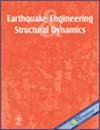Offline Real-Time Hybrid Testing Through Neural Network Enhanced Time History Iteration
Abstract
Real-time Hybrid Testing (RTHS) provides a reliable and efficient large-scale experimental technique increasingly favored in seismic performance assessment. However, it is still constrained by various factors including both hardware and software limitations in traditional structural laboratories. In recent years, offline RTHS has emerged as an alternative to address some of these limitations. Measured restoring forces of experimental substructures from the previous step are used as predefined inputs for numerical substructures without maintaining compatibility on the interfaces between substructures. Traditional RTHS is then iteratively achieved through the independent physical loading of experimental substructures and computational analysis of numerical substructures. This helps eliminate the need for specialized software and hardware to coordinate the interfaces between substructures. Previous studies show that this offline implementation has slow convergence could even go unstable, particularly when experimental substructures comprise a high proportion of damping and stiffness within the system. This study proposes integrating offline RTHS with the neural network technique. Measured restoring forces under predefined displacements are utilized to train and update a neural network model for the experimental substructure. This neural network model is then updated after each iteration for the experimental substructure and incorporated as its surrogate into a computational simulation of the entire structure for the next iteration. This proposed neural network-enhanced offline RTHS is experimentally evaluated in this study through laboratory tests on a single-degree-of-freedom structure as well as a two-story four-bay steel moment resisting frame with self-centering viscous dampers. Various neural network models are explored including simple shallow neural network (SNN) and complex long short-term memory (LSTM). The proposed method is demonstrated to significantly improve the stability, accuracy, and convergence of offline RTHS, thus providing a more effective and efficient alternative for researchers to utilize traditional laboratory equipment to evaluate system responses through component tests.

 求助内容:
求助内容: 应助结果提醒方式:
应助结果提醒方式:


